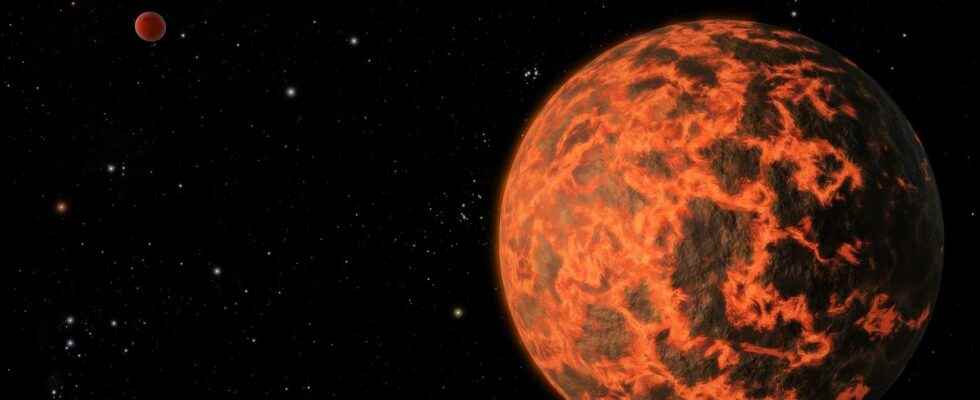You will also be interested
[EN VIDÉO] Earth’s history seen from space Since the end of the Second World War, Man has gained height and finally been able to admire the world he inhabits. From space, the Earth is beautiful, diverse and yet united, borderless. From up there, “we can see the fragility of the Earth,” said astronaut Thomas Pesquet. It’s an oasis in an ocean of nothing.
How to retrace the first million years of the geological history of the Earth while tectonic plates tends to erase all traces of our planet’s past? The geological conditions of the Hadean, a period which characterizes the primitive Earth, are thus particularly difficult to reconstruct, witnesses dating from this period being extremely rare.
The questions, on the other hand, abound. Especially with regard to nature, the composition and formation of the early earth’s crust. To study the geological processes that shaped the Earth at its origin, scientists are often forced to turn to the other planets of the planet. Solar system, especially the Moon and Mars. The observations made on these planets, free of plate tectonics, and therefore more likely to have preserved evidence of a primitive crust, in fact make it possible to make certain hypotheses on the terrestrial environment shortly after the formation of our Planet. .
Tiny traces that allow us to go back to the formation of the first earth’s crust
On Earth, the witnesses of this period are mainly derived from indirect geochemical data. To study the composition of the primitive earth’s crust, scientists thus base themselves on the analysis of nuclides which were only active during the first 100 million years after the formation of the solar system. But do these variations in isotopic compositions reflect the differentiation of the coat and the formation of the crust during the Hadean, or the contribution of meteorites as the Earth grows? The question remains debated.
However, researchers at the University of Cologne have just discovered that some igneous rocks, erupted throughout the history of the Earth, could carry the geochemical signature of the primitive crust. Tiny traces of Hadean geodynamics, but oh so precious for understanding the geological evolution of the Earth.
The geologists thus analyzed samples of rock dating back 3.55 billion years, found in South Africa at the level of the Craton of Kaapvaal. Their isotopic composition reveals small anomalies and in particular a lack of isotope 182W.
the 182W is one of the isotopes of tungsten and comes from the decrease of the 182Off (hafnium), of which the duration life is very short. This element is thus characteristic of the first 60 million years after the formation of the Solar System. The isotopic anomalies observed in the rocks of South Africa would therefore testify to geological processes that would have happened immediately after the formation of the Earth, 4.5 billion years ago.
Remnants of primitive crust still present at the bottom of the mantle
But that’s not all. Because this particular isotopic signature is also found in volcanic rocks much more recent, produced at certain hot spots.
However, how to explain that this signature is still found in current volcanic rocks? For the researchers, this means that there are still remnants of the primitive crust of the Earth today, buried in the deepest parts of the mantle. The data, published in the journal PNASalso allow us to better understand certain key stages in the evolution of our planet.
The proto-crust, of a mafic nature, would thus have formed approximately 50 million years after the Solar System. She would then have suffered an episode of merger and mineralogical differentiation, leading to the formation of several units of different composition. Among these units, the restites, rocks of high density and located at the base of the crust, would have started to “sink” into the underlying mantle. By interacting with the peridotites of the mantle, these rocks would have led to the production of reservoirs hybrids deep, always present, serving in particular to feed the large mantle plumes rising to the surface and giving rise to lavas of hot spots.
The remains of this proto-crust would thus always be stored in the depths of the mantle. The digital models suggest that this isotopic signature would therefore be the witness of the recycling, still in progress, of the primitive crust.
Interested in what you just read?
